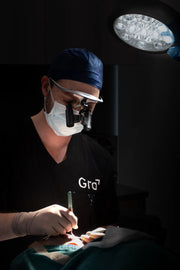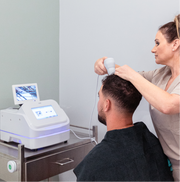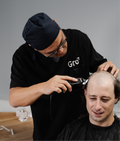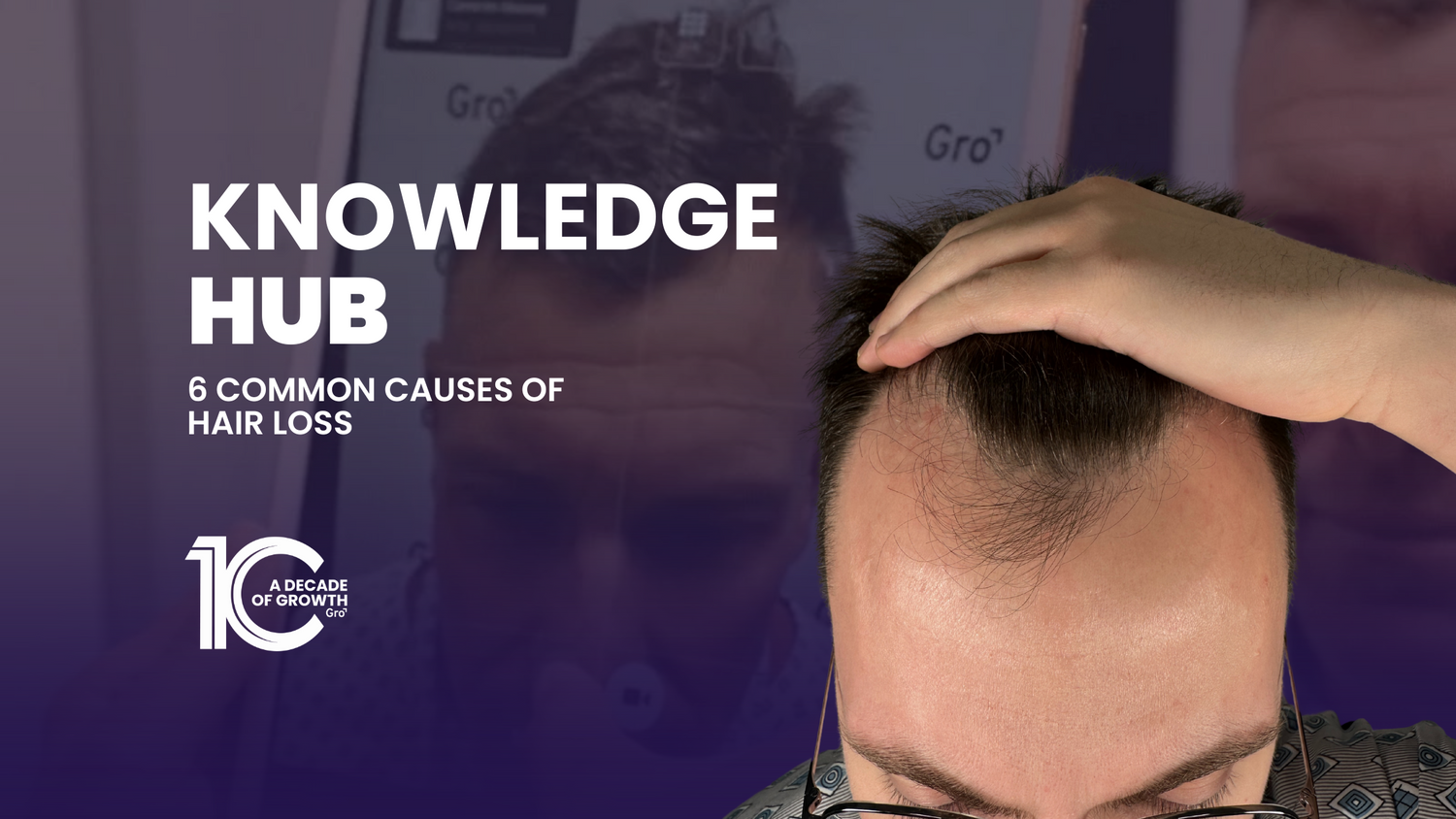If you're starting to notice hair shedding or thinning, one of the first questions to ask is why it's happening. Understanding the cause is key to knowing whether it’s temporary or progressive, and what options may be available to manage it.
How Hair Grows
Hair growth follows a natural cycle of shedding and renewal. Most people lose between 50–100 hairs each day as part of this normal cycle. Hair shedding becomes a concern when the volume or pattern of loss increases significantly or when hair doesn’t grow back at the same rate.
The hair growth cycle includes:
- Anagen: The active growth phase, lasting 2–5 years
- Catagen: A short transition phase (2–3 weeks)
- Telogen: The resting phase (about 100 days) where hair sheds
As we age, hair follicles can reduce in activity, leading to shorter anagen phases and slower regrowth.
When Does Hair Loss Typically Begin?
Many people experience hair thinning as they age. For some, changes begin in their 20s, while others may not notice significant loss until later in life. Early signs may include a receding hairline, increased shedding, or thinning around the crown.
Hair loss is influenced by multiple factors, and timing varies for each individual. It’s not always predictable or linked to age alone.
Common Causes of Hair Loss
Hair loss may result from one or more of the following triggers:
1. Stress
Physical or emotional stress can disrupt the hair growth cycle. This may lead to increased shedding in the months following a stressful event. Stress-related hair loss may be temporary once underlying stressors are managed.
2. Nutritional Deficiencies
A lack of key nutrients—such as iron, protein, zinc, and vitamins—can impact hair health. Inadequate dietary intake may reduce the body's ability to maintain normal hair growth.
3. Smoking
Smoking may affect circulation and oxygen delivery to the scalp, which can interfere with the hair growth cycle. Reducing or quitting smoking may support overall health and hair function.
4. Hormonal Changes
Hormonal fluctuations can influence hair growth. These may occur with age, medical conditions like thyroid disorders, or life events such as pregnancy and menopause.
5. Medical Conditions
Hair loss can occur alongside certain illnesses or infections, particularly those that impact the immune system, skin, or nutritional balance. Examples include anaemia, autoimmune conditions, and some dermatological issues.
6. Genetics
Hereditary hair loss—also known as androgenetic alopecia—is the most common form of progressive hair loss. It typically follows a pattern and may begin gradually after puberty. While genetic predisposition cannot be changed, management options are available.
What Can You Do?
In some cases, addressing lifestyle factors such as stress management, balanced nutrition, and overall health may help support hair growth. For others, a more structured treatment approach may be beneficial.
If you're concerned about hair loss, speaking with a qualified professional is an important first step. At Gro, all consultations are conducted by a trained Hair Growth Advisor, who can help guide you through options including:
- Prescription haircare
- Growth factor treatments
- Low-level light therapy (LED)
- Hair transplant procedures
Get Support
You can book a consultation online or in-person across one of our locations:
Still have questions? Ask us here.



















